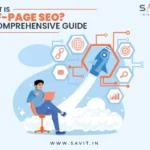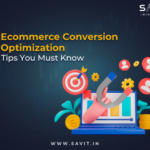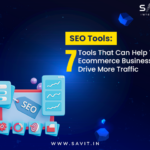The practice of optimizing your website for search engines to quickly determine which countries and which languages you utilize for business is known as international search engine optimization or international SEO.
What is international SEO
Improving your website’s exposure on search engine results pages (SERPs) for many languages and nations is known as international SEO. It enables companies to market their content to a global audience and generate organic traffic from various regions.
This blog will review the best practices for creating a successful foreign SEO strategy.
What is international SEO vs local SEO?
The process of optimizing your website for a worldwide audience indicates international SEO. On the other side, local SEO is the practice of making a website more search engine-friendly for queries made in a particular area. There are various fundamental differences between local SEO and international SEO, which are as follows:
- Target audience: Local SEO focuses on a particular area, whereas international SEO aims to reach a worldwide audience.
- Keywords: While local SEO employs keywords relevant to a particular place, international SEO uses keywords relevant to a broader audience.
- Content: Local SEO content is usually more location-specific, whereas international SEO content tends to be more general.
International SEO best practices
URL schemes for international websites
Webmasters can use a few URL formats to target a specific nation with their websites. A subdomain, a subdirectory or subfolder, a gTLD with language settings, or even adopting a different domain name entirely are some of them. Another option is to use a country code top-level domain (ccTLD). Let’s take a closer look at each of these options:
Google defines ccTLDs as using two-letter codes to identify to search engines and users the nation, sovereign state, or dependent territory in which a website is registered. Keep in mind that Google handles certain country codes generically since they are so often used for other reasons, such as .ly for Libya. While Implementing internationalization with a ccTLD, the .us is the ccTLD in sample.us
- Subdomain: Link equity from the root domain may or may not be passed to a distinct “third-level domain” hosting internationalized content.
Using a subdomain for internationalization: us.sample.com wherein .us is the subdomain.
- Subdirectory: Internationalized content is stored in a designated subdirectory or subdomain within a root domain.
Using a subdirectory for internationalization: sample.com/us wherein the /us is the subdirectory.
- Different domain: Compared to the non-internationalized site, the content that has been translated is hosted on a completely separate root domain.
Using a different domain for international SEO: sampleussite.com, wherein sampleussite is a different domain. - gTLD with language parameters: By adding a URL parameter, a general top-level domain (such as .com,.net, .org) is explicitly made for speakers of a specific language.
Using a gTLD with a language parameter for international SEO: sample.com/?lang=en-us wherein ?lang=en-us is gTLD with a language parameter.
Since search engines may read various URL structures slightly differently, each strategy has advantages and disadvantages. Resources needed for implementation and upkeep are also different. Prior to selecting the best structure for you, learning more about each choice is a good idea.
Adjust your material for the language and culture of your target audience.
Ensure that the information you are offering is appropriate for the target audience. You may give search engines and users strong signals that they are in the right place by including contact details like addresses and phone numbers together with the local language, currency, and time zone. Consider cultural variances as well when designing and developing your content. Distinct places have quite distinct perspectives on colour, design, and humour. You may improve the likelihood that they will have a good experience by making it very obvious that your page is for them.
Adapt to your web pages or website’s language.
Use hreflang or language meta tags, which are snippets of code that specify the language or languages your material is available in, to let search engines know which languages you are prepared to handle. By using the example below, Google would be informed that a Spanish version of the content is accessible at the given link:
<link rel=”alternate” href=”http://abcd.com/fr” hreflang=”fr-fr”/>
Other recommended techniques include:
- Ensure that every aspect of your website, including the help desk, content, and navigation, is available in the primary language of the area you are targeting.
- Machine translations are still not accurate enough, so avoid using them.
- Redirecting a user to a different language based only on location is not recommended. It’s acceptable to suggest another language website, but until you inquire, you have no way of knowing if the person searching in English in France is an expat, a foreign language learner, or a lost traveller online.
- Avoid utilizing scripts or cookies to display multilingual versions of a page. That kind of dynamic content may not be visible to humans and is not crawlable by search engines.
How to develop an international SEO strategy
A planned approach is necessary for your international expansion in order to effectively reach and engage consumers worldwide. Let’s examine each step you must take to create an international SEO strategy:
1. Carry out in-depth market research in various regions
You must conduct in-depth market research for that area in order to comprehend the search habits of your new audience and modify your SEO tactics appropriately. Also, carry out a competitive landscape analysis to find out how your competitors are using SEO in a specific area.
With Semrush’s Market Explorer, you may find your competitors in a specific niche, gain insight into the target population, identify potential keywords, and much more.
Key players, popular and trending keywords, market traffic, geo-distribution, and more are visible under the “Overview” page. Using this data, a high-level projection of your new playing field and your competitors should be possible.
To learn more about the demographics of the target audience, select the “Audience” option. Other details, such as age, socioeconomic status, hobbies, use of social media, and websites they frequent will be presented.
2. Determine the Target Keywords for Global Search Engine Optimisation
It’s crucial to find out what keywords your new audience uses to research subjects related to your organization. Consider linguistic variances, cultural quirks, and particular search patterns in international markets when conducting your keyword research. Examining the keywords used by your competitors can help you find profitable business prospects. Also, identify the search terms that your competitors are using to increase traffic and conversions.
You can use the Keyword Gap tool as a starting point. It will assist you in evaluating how you currently rank compared to the competitors for the new market you are concentrating on that you discovered in step one.
Add up to three competitors that you have identified after entering your domain. Next, select “Compare.” The dashboard that appears on the next screen shows you the best prospects for keywords that you are either performing poorly for compared to all of your competitors or not ranking at all.
As you continue to scroll down, a thorough table containing information about:
- Terms for which you rank higher than all of your competitors
- Terms for which you do not rank
- Keywords that you rank for, but not as highly as those of your rivals
To focus on a specific keyword, you can also apply filters. Additionally, you can use filters to refine the keyword list according to other parameters such as average monthly search traffic, keyword difficulty (a metric indicating how challenging it is to rank in the top 10 for a particular term), and more. After compiling a list of potential keywords using this table, you may refine your search results using Semrush’s Keyword Magic Tool.
Select the area, type your desired keyword into the tool’s search bar, and click “Search.” You will be directed to an extensive dashboard featuring a list of keywords along with details about them. Several filters are available to help you focus your search. Try using the “Questions” filter to identify search phrases that are inquiries. Alternatively, select “Related” to discover variants that you might not have known about.
Using the suggested categories and subgroups on the left, you may also find more specific keywords to target. Additionally, bear in mind language unique to a specific location when you undertake keyword research to ensure that you meet the expectations of your new audience.
Thus, you should use the Mexican word “lentes” instead of the Spanish phrase “gafas” if you are selling glasses and planning to grow into Mexico.
The importance of region-specific keywords is evident from the volume of keyword searches for related keywords utilizing these terms. In Mexico, “lentes de sol” is looked for far more frequently than “gafas de sol.”
3. Modify Your Content According to Regional and Cultural Preferences
Consider the audience’s distinct values, communication preferences, and cultural customs when creating material tailored to a particular region. This includes localizing as opposed to merely translating your content. Content must be translated from one language to another while maintaining its original meaning. Emphasize precision to cater to the tastes and expectations of a particular audience. Take into account the contextual, cultural, and geographical aspects of content localization. As localized material is more likely to connect with the audience, it can increase user engagement more than simply translating it. In a new market, it can also aid in establishing a favourable brand reputation. Hence, consider including links to websites that are respected as authorities in your new industry and citing instances related to their customs.
Additionally, you want to use images that your target audience finds appealing and familiar by using pictures, hues, and symbols that are appropriate for their culture and consistent with their values.
Other things to consider about could be:
- Fit and size differ depending on the nation or continent.
- Distinct date formats (DD-MM-YYYY in Europe versus MM-DD-YYYY in the US)
- Seasonal variations around the globe (for instance, summer in the United States is winter in Australia)
- Money exchange rates and costs
- Legal and regulatory measures for compliance (such as the EU’s General Data Privacy Regulation)
4. Create Useful Links
Getting backlinks from trustworthy websites in your new market can accelerate the ranking of your website and increase visits to your local pages. Your material must be compelling to local audiences to draw backlinks from sites that are relevant to the area. Any content won’t do if the data and images aren’t appropriate for the target audience in the area. For instance, translating an infographic about hiring statistics in the United States won’t benefit your Spanish-speaking audience. Content incorporating region-specific images and local hiring statistics is more likely to receive backlinks. Format is essential as well.
The following material formats are frequently connected to:
- Comprehensive manuals that showcase your knowledge
- Unique information and analysis
- Tutorials and guidelines
- Data visualizations, including infographics
- Case studies and success stories of clients
- Interactive materials such as tests and calculators
- You can use the Link Building Tool to locate potential backlinks and to carry out outreach.
Factors that Affect International SEO
International SEO is influenced by several factors, some of which are as follows.
Client Testimonials: Customer reviews on your website or regional review platforms may adversely affect your SEO efforts. Improved reviews correlate better with your primary keyword, which increases visibility.
The responsiveness of mobile: Your website’s mobile responsiveness affects overall search rankings. It is worthwhile to find a content delivery network (CDN) that can offer users an excellent website experience wherever they are.
Google My Business Account: As long as you update the locations where your business is located, your Google My Business Account can assist in improving your SEO efforts. This is where Google begins its search for language and geographic metadata on your website.
Link Building: The more backlinks from foreign websites pointing to your website, the better. Writing for regional blogs or establishing connections with influencers is an intelligent strategy to get backlinks to your website.
Conclusion
Use International SEO to realize your full global potential. Adding additional markets to your portfolio can increase sales. However, you must establish yourself as a presence in those new markets by putting international SEO best practices into effect and keeping a close eye on your progress.
Are you prepared to expand internationally? With Savit Interactive leading SEO company in India, be assured of getting exceptional International SEO services to expand globally.








































